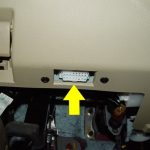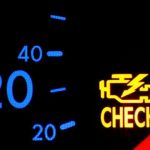In this technological era, it is undeniably crucial to harness the power of innovation and automation in every aspect of our lives. When it comes to vehicle maintenance, a revolutionary solution has emerged that promises to transform the way we address mechanical issues.
On-Board Diagnostics (OBD) testing is redefining the landscape of automotive upkeep by streamlining processes and providing real-time insights into a vehicle’s health. In this article, we will delve into the immense potential of OBD testing and explore how it empowers both car owners and mechanics alike in maintaining vehicles with utmost efficiency and precision.
The Evolution of On-Board Diagnostics: From Basic Codes to Advanced Systems
Advancements in on-board diagnostics (OBD) have revolutionized vehicle maintenance.
- The Beginning: OBD-I was the first step towards simplifying vehicle repairs. It provided basic codes that indicated the general area of the issue, allowing mechanics to narrow their search.
- The Improvement: With the arrival of OBD-II, diagnosing problems became more precise. This system standardized codes across all vehicles and expanded diagnostic capabilities beyond just emission control systems.
- The Advancement: Today’s advanced OBD systems go even further, providing real-time data monitoring and analysis. These systems can detect minor issues before they become major problems – saving time, money, and preventing breakdowns.
As technology continues to progress, on-board diagnostics will only become more sophisticated – making vehicle maintenance easier and more efficient than ever before!
How On-Board Diagnostics Testing Works: A Step-by-Step Guide
- Initial Diagnosis: When a vehicle’s check engine light comes on, the onboard diagnostics system starts its testing process. The system checks various sensors and components to identify potential issues.
- Diagnostic Trouble Codes (DTCs): If the testing detects an abnormality, it generates a diagnostic trouble code (DTC). These codes provide specific information about the problem area, such as oxygen sensor malfunction or misfiring cylinders.
- Code Readout: To access the DTCs, a mechanic uses a scan tool connected to the Diagnostic Link Connector (DLC) in the vehicle. This handy device retrieves the codes from the onboard computer and translates them into understandable terms for further analysis.
- Troubleshooting: Armed with DTCs, mechanics analyze the data to determine possible causes of malfunctions or failures within affected systems. Using their knowledge and experience, they can then take appropriate action for repairs or further inspections.
- Repair Verification: After addressing identified issues, mechanics clear any active DTCs from memory using their scan tools. They may also perform additional tests to ensure that fixes were successful and all systems are functioning correctly.
Remember: On-board diagnostics testing is crucial for identifying potential problems with your vehicle early on so that you can prevent more extensive damage down the road!
The Benefits of On-Board Diagnostics: Saving Time and Money
On-board diagnostics (OBD) testing has become an invaluable tool for vehicle owners, mechanics, and technicians.
Time Savings
With OBD testing, the process of diagnosing issues with a vehicle becomes faster and more efficient. Instead of spending hours manually checking each component, OBD systems can quickly pinpoint the source of a problem by scanning through various sensors and codes. This saves both the vehicle owner and mechanic valuable time.
Furthermore, OBD systems provide real-time data that helps identify potential problems before they worsen. By catching issues early on, vehicle maintenance can be scheduled at convenient times instead of experiencing sudden breakdowns or emergencies.
Cost Reduction
OBD testing also translates into significant cost savings for both personal car owners and fleet managers alike. With quick identification of faulty components or failing systems, repairs can be addressed immediately to prevent further damage to other parts. This proactive approach not only minimizes repair costs but also prevents expensive breakdowns that could require expensive towing services.
By identifying emerging problems early on through regular OBD tests, smaller repairs can be made before they turn into costly major ones. Moreover, conducting routine diagnostic checks ensures optimal fuel efficiency by identifying any factors that may impact mileage performance.
Investing in on-board diagnostics technology is a worthwhile endeavor for anyone responsible for maintaining vehicles as it provides valuable insights into their health while saving precious resources like time and money along the way.
Diagnostic Trouble Codes: Decoding the Language of Vehicle Health
When it comes to ensuring the health and performance of your vehicle, understanding diagnostic trouble codes (DTCs) is crucial. DTCs are specific codes that correspond to different issues or malfunctions within your vehicle’s systems. These codes help mechanics quickly identify the source of a problem, saving time and money on diagnosis.
DTCs are generated by your vehicle’s onboard diagnostics (OBD) system, which constantly monitors various sensors and components for any abnormalities. When an issue arises, such as a faulty oxygen sensor or misfiring engine cylinder, the OBD system detects it and stores a corresponding code in its memory.
To access these DTCs, you’ll need an OBD scanner or code reader. Simply plug in the device into your vehicle’s OBD port, usually located under the dashboard near the steering wheel. The scanner will then communicate with your vehicle’s computer and retrieve any stored codes. Once you have these codes in hand, you can look them up using online databases or consult with a professional mechanic to determine what repairs may be necessary.
Understanding DTCs allows for efficient troubleshooting and accurate repairs. It provides valuable insights into your vehicle’s health without requiring extensive diagnostic tests. By leveraging this language of vehicle health through on-board diagnostics testing, you can streamline maintenance procedures and address issues before they escalate – ultimately saving time and money while promoting optimal performance for your beloved automobile.
OBD Testing: Empowering Car Owners to Take Control of Maintenance
Empowering Car Owners with OBD Testing
OBD testing empowers car owners by giving them the ability to take control of their vehicle’s maintenance.
- Identifying issues before they become major problems: With OBD testing, car owners can quickly diagnose any potential issues within their vehicles and address them promptly. By detecting problems early on, costly repairs can be avoided.
- Saving time and money: OBD testing eliminates the need for frequent visits to the mechanic as it provides a comprehensive analysis of the vehicle’s performance. This allows car owners to catch minor malfunctions before they escalate into more serious and expensive repairs.
- Improving fuel efficiency: OBD testing helps optimize fuel consumption by monitoring factors such as air-to-fuel ratios, oxygen sensor performance, and engine vacuum pressure. This information allows drivers to make necessary adjustments that will improve their vehicle’s mileage.
In conclusion, incorporating OBD testing into regular vehicle maintenance routines is crucial in empowering car owners to take charge of their cars’ performance while enjoying significant cost savings in the long run.
The Future of Vehicle Maintenance: Innovations in On-Board Diagnostics
Innovations in On-Board Diagnostics
Enhanced Fault Detection
Advancements in on-board diagnostics (OBD) technology are revolutionizing vehicle maintenance. With the latest innovations, vehicles can now detect and diagnose a wider range of faults than ever before. By continuously monitoring critical systems such as engine performance, fuel efficiency, and emissions control, OBD systems provide real-time data that helps identify potential issues early on. This proactive approach not only reduces repair costs but also prevents breakdowns and improves overall vehicle reliability.
Predictive Maintenance Capabilities
OBD technology is evolving to incorporate predictive maintenance capabilities, enabling vehicles to anticipate when certain components may fail or need servicing. Equipped with sophisticated algorithms and machine learning capabilities, future OBD systems can analyze historical data patterns to predict future failures. This means that drivers will receive timely notifications about impending maintenance requirements, allowing them to schedule repairs before major problems arise.
Wireless Connectivity for Remote Monitoring
Wireless connectivity is another exciting development in on-board diagnostics testing. With this feature built into modern vehicles, mechanics can remotely access diagnostic information from a distance through secure connections. Not only does this streamline the diagnosis process by eliminating the need for physical inspections in some cases but it also enables mechanics to troubleshoot issues without physically accessing the vehicle’s diagnostic port.






